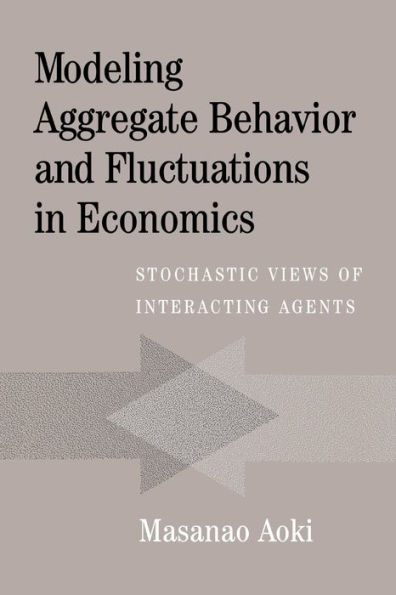Modeling Aggregate Behavior and Fluctuations in Economics: Stochastic Views of Interacting Agents
This book analyzes how a large but finite number of agents interact, and what sorts of macroeconomic statistical regularities or patterns may evolve from these interactions. By keeping the number of agents finite, the book examines situations such as fluctuations about equilibria, multiple equilibria and asymmetrical cycles of models which are caused by model states stochastically moving from one basin of attraction to another. All of these are not tractable using traditional deterministic modeling approaches. The book also discusses how agents may form clusters with stationary distributions of cluster sizes. These have important applications in analyzing volatilities of asset returns.
1117323628
Modeling Aggregate Behavior and Fluctuations in Economics: Stochastic Views of Interacting Agents
This book analyzes how a large but finite number of agents interact, and what sorts of macroeconomic statistical regularities or patterns may evolve from these interactions. By keeping the number of agents finite, the book examines situations such as fluctuations about equilibria, multiple equilibria and asymmetrical cycles of models which are caused by model states stochastically moving from one basin of attraction to another. All of these are not tractable using traditional deterministic modeling approaches. The book also discusses how agents may form clusters with stationary distributions of cluster sizes. These have important applications in analyzing volatilities of asset returns.
53.0
In Stock
5
1

Modeling Aggregate Behavior and Fluctuations in Economics: Stochastic Views of Interacting Agents
280
Modeling Aggregate Behavior and Fluctuations in Economics: Stochastic Views of Interacting Agents
280Paperback(New Edition)
$53.00
53.0
In Stock

Product Details
| ISBN-13: | 9780521606196 |
|---|---|
| Publisher: | Cambridge University Press |
| Publication date: | 09/09/2004 |
| Edition description: | New Edition |
| Pages: | 280 |
| Product dimensions: | 5.98(w) x 9.02(h) x 0.59(d) |
About the Author
From the B&N Reads Blog
